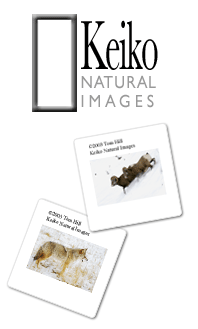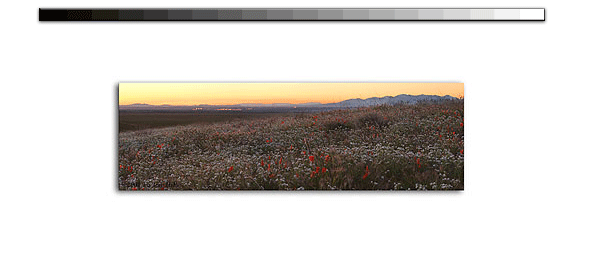|
So, the moment of truth happens when the trigger is pulled and the image is captured. How does that work with cropping images? As I said, we're limited by technology and it doesn't support our abilities to make the perfect images all the time by only using the tools we have at the time of capture. Even though the technology is advanced enough to pretty much make our exposures perfect every time, shooting dozens of frames per minute, and exceed all our dreams, it doesn't enough. There's too much shutter lag. The color's aren't right many times. There's flatly just too much to improve. What's a photographer supposed to do? He's supposed to remember what he's trying to shoot, do the best he can with the equipment he's got, and deal with the results when he gets back to the digital darkroom.
The world isn't a perfect place. Our equipment isn't up to the task. All these are reasons why I post process. I do the best I can out in the field and deal with the technical shortfalls back in the darkroom. That's why cropping isn't a four lettered word in my book because that may be the only way to make the image match the vision.
What's all this got to do with clipping wings? Well, the crop discussion has been a build up to not letting convention prevent you from making images the way you want to. It's about realizing your vision hopefully in the camera but if necessary in the darkroom.
Which brings up my main point. How do you like to shoot your birds? For me this doesn't only apply to birds. It's about all animals. I like shooting faces. I like seeing in their eyes and viewing the world as if we were next to them. It's about seeing things the way they see them. To me the appeal of shooting animals is seeing an entire universe that'd be foreign to us if it weren't for photography. It's about looking at an image and pretending to see what they see and hopefully get a sense of their being, their life, their spirit. Okay, that's all pretty heady stuff but you may think it still doesn't capture the point of cropping. But it does.
The concept of composition is a fickle thing. There are basic rules every photographer uses to guide his composition choices. I've mentioned a few myself in other articles. Unfortunately, they don't always work all the time. Compositionally blindly following the rules as I noted earlier may limit the quality of the image by over using a formula to reach an end. Clearly the rules have a place, but to me they need to be thrown away when the rules don't suit the circumstances. An obvious quality of wildlife over people photography is the difference in subject shape. The basic addition of wings makes shooting bird portraits completely different than shooting a person. For example, the rules for placing the most interesting portion of the subject--usually the eye--in one of the "power positions" may directly violate one of the key rules of avoiding clipping body parts. No more would you want to cut off an arm or leg would you want to cut a wing off by directly following those rules. But, how do you capture the classic portrait of your animal without purposefully cutting a portion of their body off? That's the struggle.
I propose compositional rules are only applicable in generic terms. Shooting birds when you're trying to show special characteristics aren't generic situations. Having a bird fly directly at you with wings flapping wildly isn't supported by the generic rules when you're trying to shooting an intimate portrait. It's an atypical image that requires it's own set of rules. The point here is you make the composition to satisfy the purpose/vision you had when pulling the trigger. Knowing what you want to make when shooting gives you ultimate leeway to violate basics.
|




